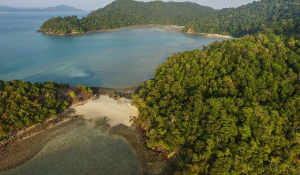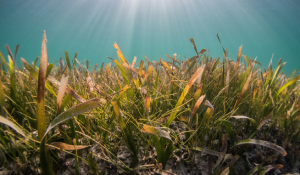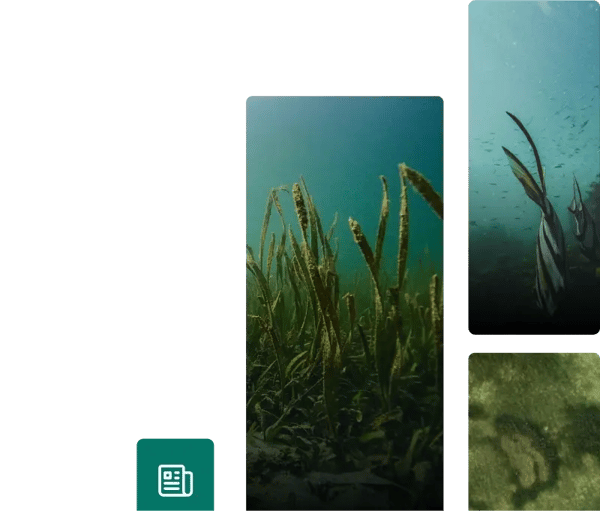Blue Carbon Ecosystems, such as mangroves, seagrass, macroalgae, swamps, peatlands, and tidal marshes, can help restore hydrological flows, conserve biodiversity, and help countries achieve the goals set out in the Paris Agreement. Global data has identified that over 130 countries have Blue Carbon Ecosystems, and as of 2018, almost 60 countries have included Blue Carbon Ecosystems in their Nationally Determined Contributions (NDC) commitments to reduce their Greenhouse Gas Emissions. This article will discuss international agreements, policies, and conservation initiatives aimed at protecting and restoring Blue Carbon Ecosystems.
The United Nations Framework Convention on Climate Change (UNFCCC)
In the past few years, countries have understood the importance of sustainably managing coastal habitats and the crucial role they play in climate change mitigation. The UNFCCC has several agenda items, bodies and work streams that relate to Blue Carbon and the protection of oceans, marine and coastal ecosystems. Countries and Parties are working together to strengthen the UNFCCC mechanisms to help promote, conserve, cooperate and enhance these carbon sinks and reservoirs to ensure environmental integrity of those not under the Montreal Protocol, such as oceans, coastal and marine ecosystems.
The Convention on Biological Diversity (CBD)
The CBD helps to support the work done by the United Nations General Assembly in the context of marine protected areas that are beyond the national jurisdiction. The CBD has three main objectives it focuses on and is the international legal instrument for: “the conservation of biological diversity; the sustainable use of the components of biological diversity; and the fair and equitable sharing of the benefits arising out of the utilization of genetic resources”. Therefore the three levels of biodiversity, ecosystems, species, and genetic resources, are covered, helping to support sustainable use of our planet’s resources. The CBD has been signed by 168 nations.
During the 15th United Nations Biodiversity Conference (COP15) in 2022 that took place in Montreal, Canada, the CBD adopted the Kunming-Montreal Global Biodiversity Framework (GBF) that would replace the CBD’s biodiversity 2011-2020 plan. The GBF will start to be implemented over the next ten years and start with countries updating their National Biodiversity Strategies and Action Plans (NBSAPs) to align with the new global goals that include “effective conservation and management of at least 30% of the world’s land, coastal areas and oceans” by 2030.
For more information on the types of properties in which mangroves sit, please read our blog.
Ramsar Convention on Wetlands
The Ramsar Convention on Wetlands is an international environmental treaty that was signed in Ramsar, Iran, with the support of UNESCO, in 1971. Thanks to this convention, a wetland site that is deemed to be of international importance can now be protected and classified as a Ramsar site. The convention includes lakes, rivers, swamps, marches, wet grasslands, peatlands, mangroves, and more. The convention has three main pillars that contracting parties need to commit to: “work towards the wise use of all their wetlands; designate suitable wetlands for the list of Wetlands of International Importance (the “Ramsar List”) and ensure their effective management; and cooperate internationally on transboundary wetlands, shared wetland systems and shared species”. As of 2020, there are more than 970 marine and coastal Ramsar sites across the world, covering more than 72.7 million hectares.
International Partnership for Blue Carbon (IPBC)
The IPBC is a global network that is composed of government agencies, non-governmental and intergovernmental organizations, and research institutions that are committed to the conservation of coastal wetlands and ecosystems. The IPBC was created at the 21st Conference of the Parties (COP21) in Paris in 2015, and has grown to include more than 50 members. Its mission is to be an open forum for its members to share, connect and collaborate together to find and build solutions, take action, while benefiting from unique expertise a global community provides.
Its members work together to “increase international commitments to protect coastal Blue Carbon Ecosystems; improve national policies to protect coastal Blue Carbon Ecosystems; and accelerate on-the-ground implementation of Blue Carbon protection and restoration activities'', to reach the IPBC’s vision for all global coastal Blue Carbon Ecosystems, such as mangroves, to be protected, restored and/ or sustainably managed.
Global Mangrove Alliance & Mangrove Breakthrough
The recent Mangrove Breakthrough, launched at the 27th Conference of the Parties (COP27) in Egypt in 2022, provides a framework for State and non-State actors alike to come together to achieve the target of securing over 15 million hectares of mangroves around the world by 2030. The area of focus includes “halting mangrove loss; restoring half of recent losses; doubling the protection of mangroves globally; and ensuring sustainable long-term finance for all existing mangroves”. At the most recent Conference of the Parties (COP28), 50 governments that represent more than half of the world’s mangroves and 57 non-state actors support the Mangrove Breakthrough. By endorsing the Mangrove Breakthrough, these actors commit to restoring mangroves fairly and equitably.
In conclusion, all of the international agreements, policies, and conservation initiatives mentioned above highlight how crucial it is to protect these Blue Carbon Ecosystems due to the role these play in terms of carbon sequestration and biodiversity preservation. For more Blue Carbon initiatives and project information, check out our Blue Carbon page for a deeper dive or contact one of our project analysts.
Feel free to contact us if you're interested in participating in any of these projects or if you'd like more information. By buying the carbon credits produced by these initiatives, you're supporting the implementation of restoration and conservation efforts while also enhancing the livelihoods of communities.
Sources:
- NCBI
- Ramsar
- The Blue Carbon Initiative
- Climate Champions - UNFCCC
- UNEP
- Blue Carbon Partnership
- Mangrove Alliance
- Mangrove Alliance - Breakthrough
- Climate Initiatives Platform
- The Blue Carbon Initiative
- Ocean Panel
- Informea
- IUCN
Common Q&As
Although mangrove forests are widely distributed across more than 120 tropical and subtropical countries and territories, they are rare globally, covering less than 1% of all tropical forests worldwide. Some locations include; Mexico, Mozambique, and Indonesia.
For more information refer to our article: Types of Property on which Mangroves Ecosystems Sit.
The significance of Blue Carbon projects lies in their capacity to combat climate change and their interconnectedness with the SDGs. SDGs, adopted by the United Nations in 2015, encompass a broad spectrum of social, economic, and environmental objectives aimed at achieving a sustainable and equitable future for all.
For more information, read our article: Blue Carbon and Sustainable Development Goals.
Blue Carbon ecosystems offer recreational and leisure opportunities that can drive tourism and stimulate economic growth in coastal regions. Mangrove forests, for example, attract tourists interested in birdwatching, kayaking, and nature photography. Similarly, seagrass meadows and coral reefs are popular destinations for snorkeling and scuba diving enthusiasts.
For more information, read our article: Understanding Blue Carbon & the Role of Mangroves in Carbon Sequestration.
Share this
You May Also Like
These Related Stories

Understanding Blue Carbon & Mangroves' Role in Carbon Sequestration

Mexico Visit: 3 Ecosystems, 12 Communities & 10 Days


